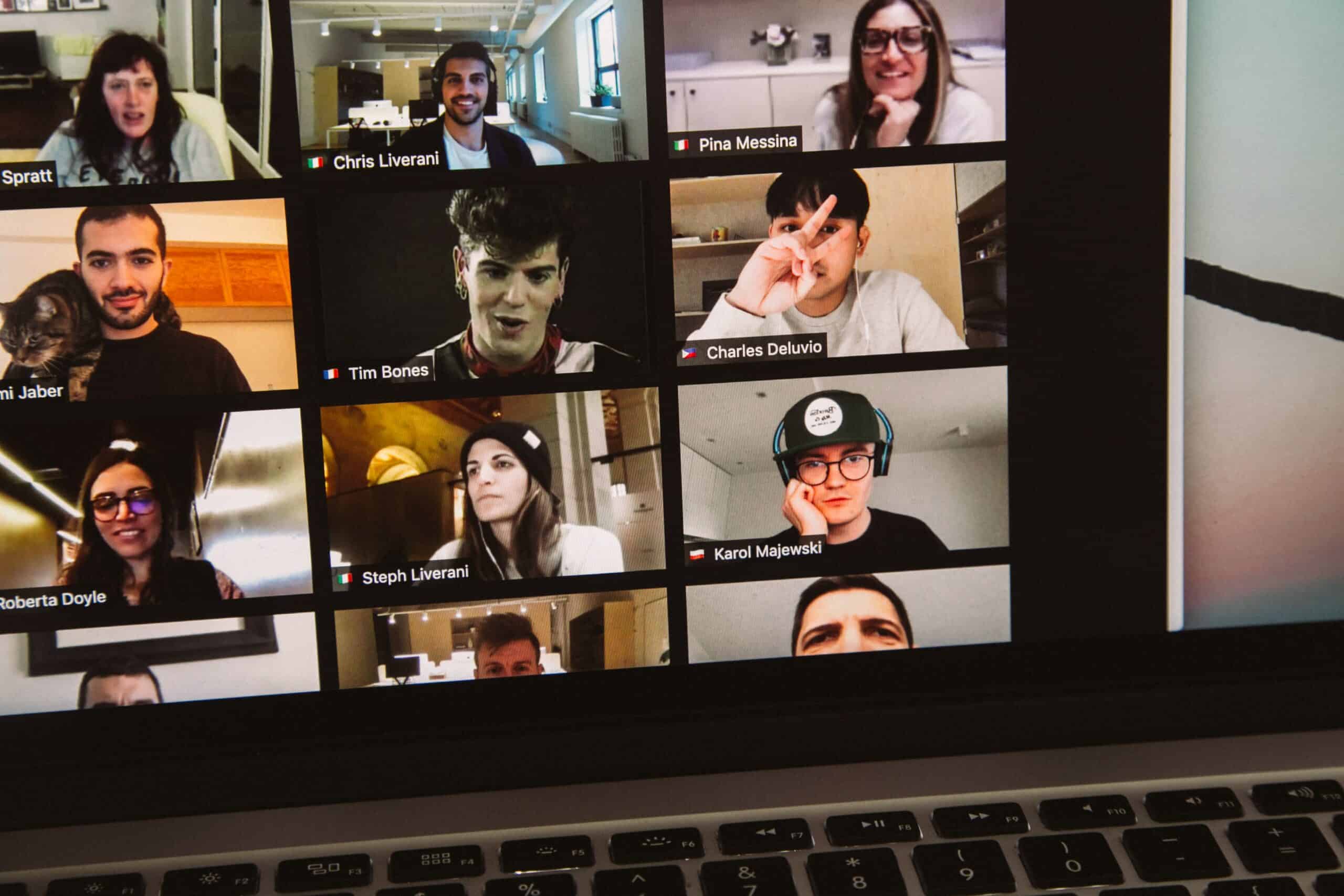Managing a team at a small digital agency poses unique challenges that necessitate both subtlety and strategy, especially when your team is composed of remote contractors working asynchronously. The concept of remote work has transitioned from a rare perk to a standard fixture in the digital industry, redefining how projects are delivered and teams are coordinated. As a manager, ensuring that communication is seamless and that every team member is aligned with the project’s goals, despite the lack of a shared workspace, is crucial to your agency’s success.

At the core of effective team management is the understanding of how asynchronous communication impacts workflow within a digital agency. This mode of interaction allows for flexibility and autonomy amongst your team members, but it also requires a refined approach to task delegation and progress tracking. You need to establish clear expectations and systems that support both individual productivity and collaborative momentum.
Balancing the needs of the project with the individual strengths of remote contractors requires a keen awareness of the human element in digital workspaces. In a remote setting, the relational dynamics shift, and as a manager, it’s your responsibility to foster a culture where trust, transparency, and accountability are paramount. By mastering these components of remote teamwork, you lay the groundwork for a digital agency that’s resilient, adaptable, and poised for success in the ever-evolving digital landscape.
Building a Foundation for Remote Team Management
When managing a remote team, laying the groundwork for effective communication, accountability, and expectation management is crucial. These pillars are instrumental in fostering a productive remote work environment.
Establishing Clear Communication Channels
You need to implement reliable communication tools to ensure seamless, ongoing dialogue within your team. A mix of synchronous tools like Slack for instant messaging and Zoom for video calls, paired with asynchronous platforms such as Trello for task management and Confluence for documentation, provide comprehensive options.
- Instant Messaging: Slack, Microsoft Teams
- Video Conferencing: Zoom, Google Meet
- Project Management: Asana, Trello
- Documentation: Confluence, Google Docs
Create protocols for usage:
- Daily stand-ups via video call
- Instant messages for quick queries
- Task updates in project management tools
- Documentation for reference and scale
Ensuring Accountability and Trust
Accountability starts with clarity in roles and tasks. Use tools like Asana or Trello to assign tasks with clear deadlines. Implement time tracking software like Toggl to promote transparency. Encourage regular updates and check-ins, fostering a trust culture where team members feel valued and visible.
- Task Management: Assign responsibilities clearly.
- Time Tracking: Toggl, Harvest
- Regular Check-ins: Weekly one-on-ones or team meetings
- Visibility: Shared progress reports and collaboration boards
Setting and Managing Expectations
Set clear expectations by detailing project goals, deliverables, and timelines. Regularly revisit goals to adjust for project pivots and ensure that everyone’s efforts align with the shifting targets. Use a combination of Asana for outlining project steps and Google Calendar for managing deadlines and milestones.
- Project Goals: Define and document in project management platforms.
- Deliverables: Specify in agreements and track in shared spaces.
- Timelines: Visualize and update using calendars and Gantt charts.
- Regular Reviews: Schedule and conduct to stay on track.
Enhancing Team Collaboration and Productivity
In a digital landscape where teams are spread across various time zones, it’s crucial to adopt strategies that optimize collaboration and productivity. Your success hinges on the efficacy of your remote meetings, the tech tools at your disposal, and your ability to keep the team engaged and motivated.
Facilitating Effective Virtual Meetings
To run effective virtual meetings:
- Schedule meetings in advance using a shared calendar to ensure maximum attendance.
- Set a clear agenda with objectives and pre-assigned roles to maintain focus.
Use summarization techniques at the meeting’s end to recap decisions and action items, ensuring alignment.
Leveraging Collaborative Technologies
To enhance collaboration through technology:
- Adopt project management tools (e.g., Asana, Trello) for transparent task tracking.
- Utilize communication platforms (e.g., Slack, Teams) for real-time and asynchronous discussions.
Choose tools that integrate seamlessly to streamline workflows and reduce the need for context-switching.
Maintaining Engagement and Motivation
To sustain your team’s motivation and engagement:
- Recognize achievements with shout-outs in team channels to foster a culture of appreciation.
- Launch regular virtual team-building exercises to strengthen relationships and team spirit.
Encourage a healthy work-life balance through flexible hours and respecting off-work periods, aiding in long-term productivity.
Overcoming Remote Management Challenges
In the digital agency landscape, managing remote teams requires a strategic approach to maintain efficiency and meet project deadlines. You have to navigate various challenges, from coordinating across time zones to ensuring work-life balance to preserve team morale.
Dealing with Time Zone Differences and Deadlines
Time zone differences can create significant hurdles in synchronization and meeting project deadlines. To mitigate this:
- Set Clear Expectations: Clearly communicate deadlines, ensuring they’re visible and understood by all team members, regardless of their time zone.
- Leverage Technology: Use scheduling tools that display a collective view of individual schedules and time zones, making it easier to plan collaboratively.
By implementing these practices, you harmonize workflows and maintain a steady progress towards deadlines.
Preventing Burnout with Work-Life Balance
Burnout among remote workers can escalate quickly if not adequately addressed, leading to a decline in both productivity and work quality. To prevent this:
- Encourage Regular Breaks: Remind your team to take short, frequent breaks to recharge, using tools like timers or alerts.
- Foster Open Communication: Create an environment where team members feel comfortable discussing their workload and capacity.
Effective communication and regular breaks are key in maintaining work-life balance, which in turn prevents burnout and upholds output quality.
Utilizing Flexible Schedules Effectively
Flexible schedules are a core advantage of remote work; however, they can lead to a drop in cohesion and efficiency if not managed properly. To make flexible schedules an asset:
- Establish Core Hours: Define a window of time where everyone is available, fostering better teamwork and immediate response to issues.
- Monitor Work Patterns: Observe when your team is most productive and align tasks with these periods for optimal results.
By anchoring flexible work schedules around core hours and peak productivity times, you enhance efficiency and streamline collaboration.
Optimizing Performance and Continuous Improvement
To maintain a competitive edge in a small digital agency, optimizing your team’s performance and committing to continuous improvement are crucial. Utilize structured feedback and performance assessments, along with fostering professional growth to achieve significant results.
Real-Time Feedback and Regular Check-Ins
Real-time feedback is instrumental in guiding contractors toward agency goals. Implement weekly virtual check-ins using tools like Zoom to discuss project updates and challenges. Use shared project management platforms like Asana or Trello to provide feedback that is immediate, specific, and easily accessible. This ensures misunderstandings are swiftly addressed and allows for constant alignment with project objectives.
- Weekly virtual meetings for project updates.
- Shared project management tools for instant feedback.
Performance Measurement and Management
Measuring performance is a dynamic process that requires clear metrics. Define what success looks like for every project, and track progress with Key Performance Indicators (KPIs). Create a dashboard that highlights metrics such as project timeline adherence, budget compliance, and client satisfaction. This quantifiable approach helps to identify areas for improvement and reinforces employee retention by clearly stating expectations and recognizing achievements.
- Clear KPIs for project and individual performance.
- Dashboard for tracking and transparency.
Implementing a Culture of Professional Development
Encourage professional development by providing access to online courses, webinars, and workshops relevant to your industry. Set aside a budget for professional growth to signal your investment in your team’s skills and long-term career development. Foster a mentoring system that pairs less experienced contractors with more seasoned professionals, enhancing knowledge transfer and bolstering performance across the board.
- Budget and resources for ongoing learning opportunities.
- Mentoring program to enhance skill sets.
Strategies for Effective Onboarding and Team Building
To establish a thriving team in a small digital agency, it’s essential to focus on cohesive onboarding and fostering a supportive culture. Your contractors will feel more empowered and engaged, paving the way for long-term collaboration.
Creating a Sense of Belonging and Culture
Your digital agency’s culture sets the stage for every interaction. Begin by crafting a welcome package that is both informative and personable. This could include:
- A welcoming email or video sharing the agency’s history, values, and mission.
- An introduction to team members via a collaborative platform, encouraging personal stories to foster connections.
Consistency in communication is key. Schedule regular virtual meetups or “get-to-know-you” sessions, utilizing tools like video conferencing to simulate a communal space.
Interactive Onboarding and Training Processes
Proper onboarding ensures that contractors integrate smoothly into their roles. Your approach should be interactive and clearly structured:
- Documentation: Provide access to a central repository containing role-specific guides, process documents, and company policies.
- Virtual Training Sessions: Organize live sessions for hands-on experience with company tools and workflows.
- Feedback Loops: Early and often, gather feedback to optimize onboarding and remove barriers to productivity.
Remember, continuous employee engagement leads to empowerment and a healthy work culture, even in a remote setting.







